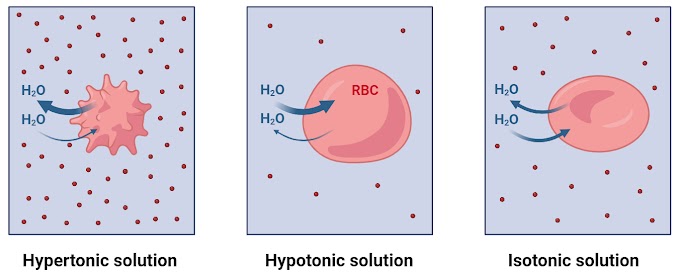What is Glucose
Glucose is a simple sugar and a vital carbohydrate for life. It is a monosaccharide with the molecular formula C₆H₁₂O₆ and serves as the primary energy source for most living organisms. Glucose is classified as a hexose sugar because it contains six carbon atoms.
Structure of Glucose
In terms of structure, glucose exists in two main forms: a linear form, with an aldehyde group (-CHO), and a more common cyclic form (pyranose), which forms when the aldehyde group reacts with a hydroxyl group on the same molecule.
Glucose exists in different forms. The biologically active form is D-glucose, while its mirror image, L-glucose, is rarely found in nature. In the cyclic form, glucose can appear as alpha (α) or beta (β) anomers, which differ in the orientation of a hydroxyl group on the first carbon atom. These differences influence how glucose interacts in biological processes, such as forming polymers like starch and cellulose.
Importance of Glucose
It plays a central role in metabolism. During glycolysis, glucose is broken down into smaller molecules like pyruvate, producing energy in the form of ATP (adenosine triphosphate). Excess glucose can be stored in animals as glycogen or in plants as starch. It is also a building block for polysaccharides like cellulose, which provides structural support in plants.
Sources of Glucose
Naturally, glucose is abundant in foods like fruits, vegetables, and honey. It is also produced by plants during photosynthesis, where light energy is used to convert carbon dioxide and water into glucose and oxygen. This process makes glucose a critical component of the global energy cycle.
Difference Between Alpha and Beta Glucose
The primary difference between alpha and beta glucose lies in the orientation of the hydroxyl group (-OH) attached to the anomeric carbon (the carbon that was part of the carbonyl group in the open-chain form) in their cyclic forms.
|
|
Alpha Glucose |
Beta Glucose |
|
Hydroxyl group |
when glucose forms a ring (in its cyclic form), the
hydroxyl group on the anomeric carbon (the carbon that was part of the
carbonyl group in the open-chain form) is positioned below the plane of the
ring. |
the hydroxyl group on the anomeric carbon is positioned
above the plane of the ring. |
|
Symbol |
denoted
as α-D-glucose. |
denoted
as β-D-glucose |
|
Source |
Found in starch (e.g., amylose) |
Found in cellulose |
|
Usage |
Used for
energy storage in plants and animals |
Used for
structural support in plants and acts as dietary fiber in humans |
|
Stability |
Less stable than beta glucose |
More stable due to hydrogen bonding between chains |
|
Function in Animals |
Easily
digestible by humans |
Indigestible
by humans the enzymes to break the beta glycosidic bonds |
|
Industrial
Applications |
Used in the production of ethanol, sweeteners, etc. |
Used for producing biofuels, paper, textiles, etc. |
The key difference between alpha and beta glucose lies in the orientation of the hydroxyl (-OH) group on the anomeric carbon. This seemingly small difference leads to significant variations in their biological roles, digestion, and structural properties.
Short Questions And Answers
1. What is the key structural difference between alpha and beta glucose?
A. The hydroxyl group (-OH) on the anomeric carbon (C1) is below the plane of the ring in alpha glucose, while in beta glucose, it is above the plane of the ring.
2. Which polysaccharides are made from alpha glucose?
A. Polysaccharides like starch (amylose and amylopectin) and glycogen are made from alpha glucose.
3. Why is beta glucose more stable than alpha glucose?
A. Beta glucose is more stable due to better hydrogen bonding between its molecules, which reduces steric hindrance.
4. Can humans digest beta glucose-based polysaccharides like cellulose?
A. No, humans cannot digest cellulose because they lack the enzyme cellulase, which is needed to break the beta-1,4-glycosidic bonds.
5. What is the biological role of alpha glucose in the body?
A. Alpha glucose is used as a primary energy source and is stored as glycogen in animals or starch in plants for energy reserves.






0 Comments